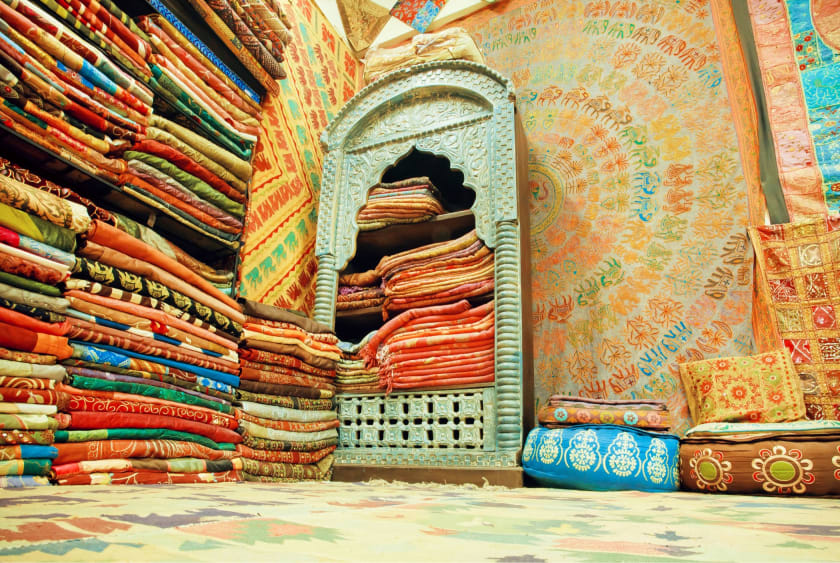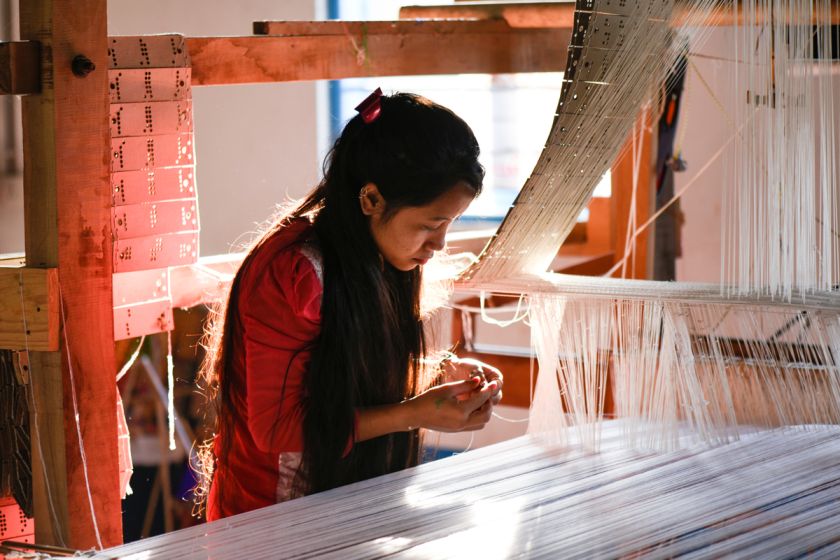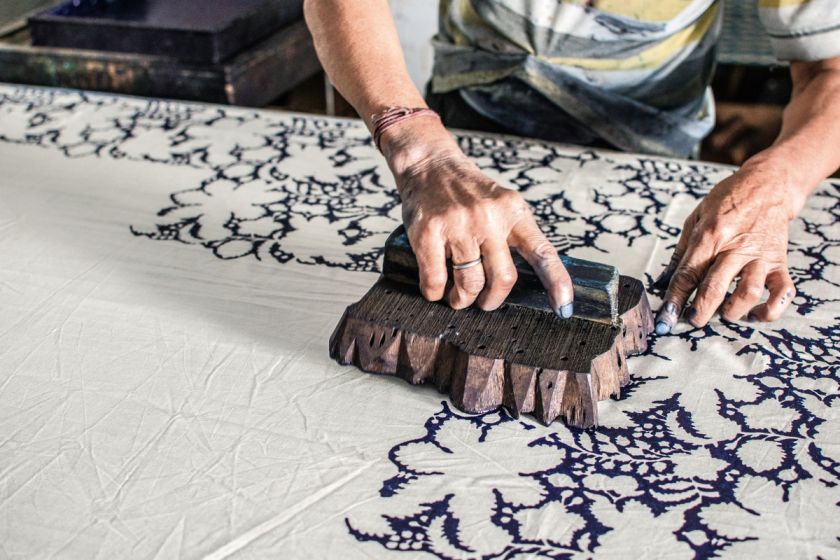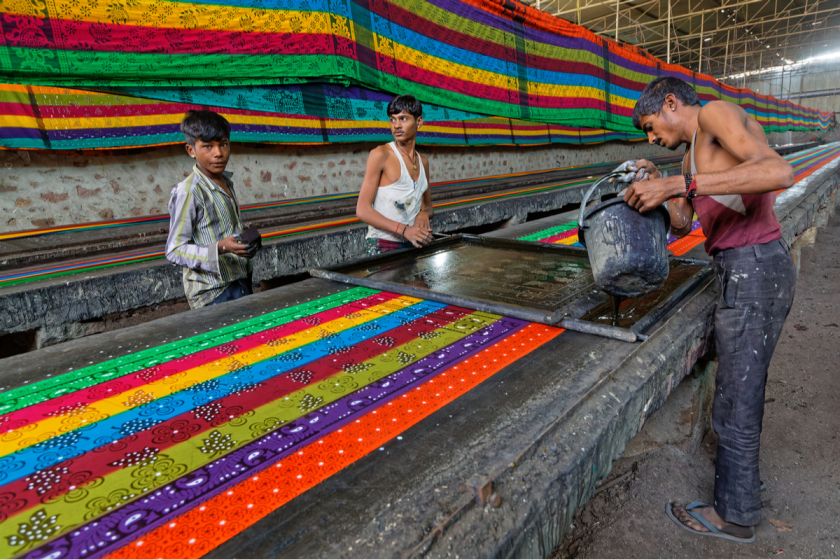A Case Study of Indian Garments Manufacturing Enterprises



India's garment business is worth one trillion rupees. By quantity, almost one-third of knitwear manufacturing and around a quarter of its cloth manufacturing is exported. Textile exporters in India have vital market participation and elements to uplift the Indian economy. The garment sector produces over a hundred clothes varieties for women, men, and children.
Some tips to boost export in Indian garment manufacturing enterprises

· Explanation on the export strategies in the competitive marketplace
The company's success depends on cost, delivery, quality, efficiency, reliability, flexibility, and creativity in every aspect of changes in the export market. Successful small and mid-sized enterprises determine their objectives based on their understanding of market trends in both domestic & global environments for export. Manufacturing booming programs and plans were introduced on a priority basis by small and mid-sized enterprises in a competitive manner to help them survive. These plans enable mid-sized enterprises to enhance quality and efficiency to compete with the national and worldwide levels.
According to small and mid-sized enterprises reviews on export, having defined priorities and goals is not the usual trend because there are several unknown factors in operations. These unusual changes can happen because of a lack of resources and concentration on workers. A consistent strategy plan for small and mid-sized enterprises is difficult to implement. Participants in the research also stated that associated businesses such as accessory manufacturers, spinning mills, and other sectors of small and mid-sized enterprises establish most of the trends. However, small and mid-sized garment enterprises operate on low margins, so their work capability rates become unsustainable. The majority of participants assessed this aspect as crucial to their firm's survival. Entrepreneurs summarize that small and mid-sized enterprises can sustain when they have a clear understanding of the priorities for the market.
· Government relief policies for exporters
The Indian fashion sector is sometimes unregulated, with small companies gaining from government policies that favored them. Numerous initiatives, such as de-reservation, were included in the National Textile Policy of 2000 to boost the textile industry. Improving and empowering the fashion industry, small mid-sized enterprise players significantly contribute to the economy's long-term sustainability. Government plays a vital role in helping small mid-sized industries to uplift their textile export plans. Textile exporters in India try to promote their product and service worldwide. To achieve all small mid-sized enterprise objectives, the Indian Textile Ministry has introduced several supporting initiatives in its vision statement. To highlight a few, it facilitates the establishment of skill development programs, textile clusters, labor legislation reformation proposals, value chain enhancement initiatives, and bank-based small mid-enterprises financing schemes. Small mid-sized industries come across all government initiatives to find the chance to keep their business consistency. Small businesses are attentive to getting advantages from the Indian government and other institutions and have helped maintain and expand their businesses. These programs assist small and mid-enterprises in sustaining their operations in increasingly competitive markets and motivate textile exporters in India.
· Culture and business support in inter-country business
The leadership and direction of top management affect the culture and operations of any enterprise worldwide. Entrepreneurs have required having both learning and an innovative approach. Small and mid-sized enterprises are facing limited financial resources. The management approach is crucial to the growth of any small business. These all above factors are for study because leadership plays a vital role in the activities of small and midsize enterprises, along with their ability to benchmark achievement. Small and mid-enterprises in the textile sector had an idea to be family businesses in India, with the family being liable for the company's values and initiatives. It is a significant factor in the current scenario because the development of norms and practices for business operations is essential to its sustainability.
· Technical and skillful exposure in the workplace

In many cases, it discovers that most staff members in small and mid-Enterprises have lacked the essential knowledge to deal with international clients and operations. Managers of small and large businesses should have ethnic diversity awareness and order management skills. Government programs such as the public-private collaborations and National Skill Development Council have proceeded towards the next level. The staff has the experience to perform executive orders to improve the accessibility and periodic training programs investigated by numerous partners for the export industries. The initiative improved the company's capacity by reducing overall costs and making affordable textile exports in India.
· Expenditure control
Many researchers perceive price reduction to be a factor in determining whether countries export garments. Many researchers consider cost reduction to determine a critical factor in whether nations export textiles. Reduced input costs, energy, dyes and chemicals, labor, capital, and innovation are essential for India to profit from the absence of quotas. Cost reduction is a factor for business sustainability in Indian small and mid-enterprises. In some cases, small mid- enterprises have more efficiency to get more margin than large enterprises. As a matter of exporter aspect, small mid-sized entrepreneurs would not allow policy made for export. So, the small mid-sized enterprise would not prefer a textile exporter in India.
· Efficiency testing
Productivity is an essential aspect of the Indian fashion industry because it helps manage the technological level, product style, production volume, and price point. It also criticizes the consciousness of optimal productivity levels, production scale, high rate of non-first production quality; lead time; workforce absenteeism and turnover; labor relations, and industrial engineering basics. As per industry assessments, India's textile industries are not efficient enough to compete globally. In India, small businesses are more productive than small and large companies. Fashinza provides garments and vendors to any business in a belonging state.
· Innovation, collaborations, and Information technology services
The consideration of Small Mid-Enterprises depends on traditional technologies and management practices. Small Mid-Enterprises that want to compete have a good knowledge of the problem and strive to improve business standing with the support of purchasers. Entrepreneurs should invest in sustainable projects and provide services and products as per customers' requirements. Only service and product development competencies, but on the other hand, have a significant effect on organizational performance. These Small and mid-enterprises may have excellent retailer and distributor ties. On the other hand, relationship capabilities do not impact the estimation of company profitability. Returns on capital, new product success, staff satisfaction, and advertising overall indicate positional benefit that does not always enhance company profitability.
Increased access to associations such as the Garment Manufacturing Association of India, leading small mid-enterprises, and Apparel Export Promotion Council forums helped buy the business technologies. The formation of new collaborations enhanced the business's long-term viability. Supplier relationships and the best supply chain management techniques make every production process inexpensive technology. They also agree that small and midsize businesses has extended their operations to upgrade vendor technology. Because they have more flexibility than the LSEs, they can structurally react to the buyer's needs.
Problems of the Export Sector in the Garment Industry: -

- In 2005, the market fell with the vast mess that still showed hazily. There are high chances that multinational brands like Mango will introduce to India fastly.
- Another problem is a lack of resources and raw materials. The cotton industry has faced a lack of supply which affects fabric production that interrupts export. Fabric quality is no longer equivalent to international norms. As a result, there are difficulties with India's quality.
- India can compete with Western trade, but barriers range from government regulations on exporting and importing technology to knowing the labor laws and factory act. The countries still have many drawbacks that require technology, machinery, and relevant expertise to propel this industry forward.
- Designers and garments are rated not only on the collection but also on how well they have finished for worldwide norms.
- Due to a lack of interest from huge industries, some money dedicates to research and development. In these production areas, a growing gap in soft capability has emerged.
- The official statistical system's insufficient coverage of informal and unregulated factories is related to a lack of detailed knowledge of the industry as a whole.
Conclusion
The development and growth of the textile industry significantly affect India's overall economic growth. Much of this expansion can trace to broader macroeconomic changes adopted by the government during the first stage of economic privatisation in the 1970s and 1980s, which favored export-oriented overseas investment and increased production and exports on the garment of different small sectors. Many small and mid-sized enterprises are trying to grow and export their products. But due to many reasons, such as a pandemic, government policies, market ups-downs stop them from exporting their products. Small enterprises can order their apparel in bulk at affordable prices. They can click here for more information.



















